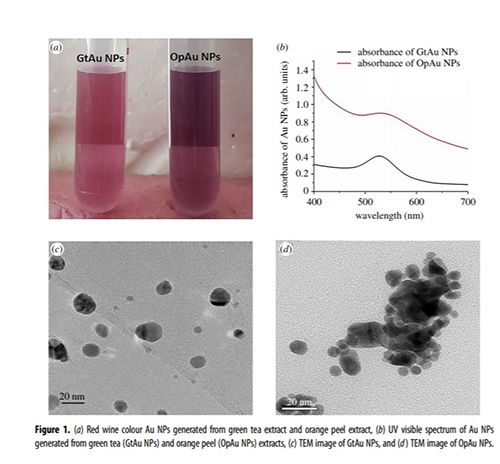Copyright © 2022 Foshan MBRT Nanofiberlabs Technology Co., Ltd All rights reserved.Site Map
This study involves the generation of gold nanoparticles (Au NPs) via a novel natural/non-toxic methodology using tea and orange-peel extracts. These were then embedded into a novel blend composed of a polyethylene oxide and gelatin (PEO-Gel) fibre mat. The scanning electron microscopy results indicated that the addition of both collagen (COL) and ascorbic acid (AA) into the PEO-Gel system (PEO-Gel-AA-COL system) enhances the Au NP incorporation into nanofibres leading to a diameter of 164.60 ± 20.95 and 192.43 ± 39.14 nm in contrast to the spraying observed with the Au PEO-Gel system alone. Releasing studies conducted over 30 min indicated that the PEO-Gel-AA-COL-orange peel Au (OpAu) system accounts for a higher content of Au release than the green tea Au (GtAu) NP system where a maximum release could be attained within 10–30 min depending on the amount of Au NPs that have been incorporated. Moreover, the transdermal diffusion studies conducted using Strat membrane indicated that Au NPs from both formulations (PEO-Gel-AA-COL-GtAu nanofibre, PEO-Gel-AA-COL-OpAu nanofibre) have diffused through the stratum corneum and trapped in the dermis and epidermis indicating its transdermal deliverability. Additionally, 2,2-diphenyl-1-picrylhydrazyl (DPPH) assay revealed that nanofibres have similar radical scavenging activity like AA standard. Toxicity evaluation on a zebra fish embryo model confirmed that both GtAu NPs and OpAu NPs do not induce any teratogenic activity and are safe to be used in the range of 1.0–167 µg ml−1.

Published:2020
Journal:Royal Society Open Science
Impact Factor:2.647
Paper link:https://royalsocietypublishing.org/doi/full/10.1098/rsos.201266